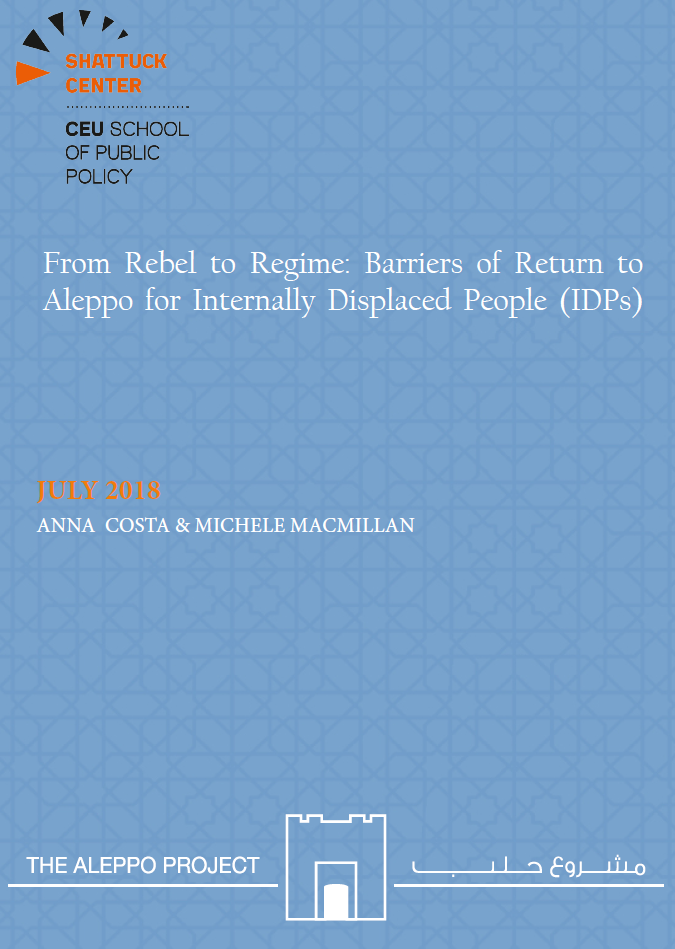EXECUTIVE SUMMARY
As of March 2018, 384,425 Aleppians remain internally displaced inside Syria with 62,970 residing in Idlib governorate. This portion in Idlib represents 16.3 percent of Internally Displaced People (IDPs) from Aleppo. The approximately other 83 percent that was displaced by the conflict relocated inside of Aleppo governorate (70 percent) or Ar-Raqqa (13 percent).1
This report focuses on the residents of Aleppo that are displaced within rebel-held areas, specifically Idlib governorate. These IDPs face the most difficult barriers to return to their homes in eastern Aleppo, a regime-held area. Their current conditions are insecure with continued violence in the region and little economic security. They live in dire conditions with makeshift and rented houses. They have limited access to healthcare and education facilities for their children. Despite being on Syrian territory only a few kilometers from their home they are not able to return.
There are several barriers that prevent IDPs to safely return to their homes. These barriers are compounded due to the post-conflict environment and the political unbalance related to the regime control over Aleppo. Barriers include physical safety such as military and intelligence services, limited transportation and fear of checkpoints. Additional barriers to economic limitations are the lack of economy and industry, looting of houses and businesses and physical destruction. IDPs face more than one barrier at a time and even if they find a solution to one they still have to face others.
These barriers have led to three main concerns for building an Aleppo that facilitates the return of IDPs from rebel-held areas. These concerns are continual fear of persecution, limited reconstruction and social re-engineering of the city. A cross-cutting theme through all barriers is the fear of persecution for being associated before or currently with the opposition. The uncertainty of not knowing who will be targeted and for what reason reduces the chances of their return. Post-conflict Aleppo has seen a drastic change in the social fabric of the city. There is a clear divide between those that opposed the regime and those who did not. The unequal treatment of citizens could lead to rising tensions and discriminatory policies. The moderate and selective reconstruction of the city is preventing and discouraging Aleppians to return.
To download the full report please click here
This paper was presented at the fourth Lemkin Reunion, held in February 2018 and organized by the Shattuck Center at the School of Public Policy, Central European University in Budapest. The paper is based on research carried out by the authors in 2017 at Shattuck Center’s Aleppo Project.
1 “Syrian Arab Republic: IDP Movements.” Humanitarian Response. March 2018. https://www.humanitarianresponse.info/en/operations/stima/idps-tracking
 The Aleppo Project
The Aleppo Project
Join the conversation
You must be logged in to post a comment.